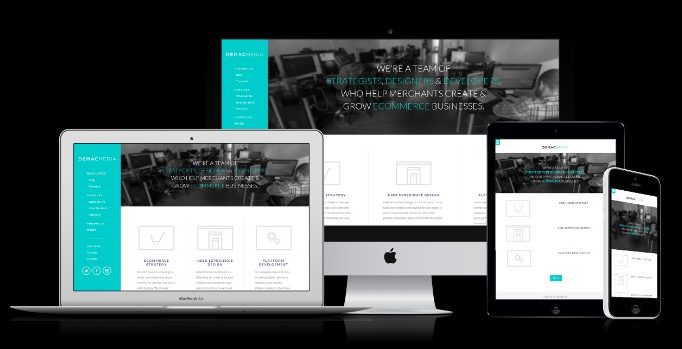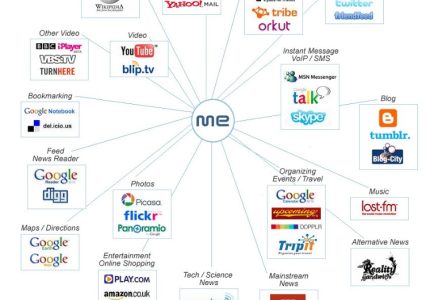Overview of Website Design Services
Our website design services offer comprehensive solutions to create visually appealing, user-friendly, and highly functional websites that meet your business needs. From conceptualization to launch, we prioritize innovative design, responsive layouts, and seamless user experiences to help your brand stand out online. Whether you’re starting a new project or revamping an existing site, our expert team is dedicated to delivering customized websites that drive engagement and growth.
Definition and Importance
Website design services encompass the process of creating visually appealing, user-friendly, and functional websites tailored to meet the specific needs of businesses and individuals. These services include layout development, graphic design, content arrangement, and technical features to ensure an optimal online presence. An effectively designed website serves as an essential tool for establishing credibility, attracting visitors, and driving engagement in the digital world.
The importance of website design services lies in their ability to enhance user experience, improve accessibility, and support branding efforts. A well-designed website not only attracts more visitors but also encourages them to stay longer and interact more, which can lead to increased conversions and customer loyalty. In today’s competitive online environment, investing in professional website design is crucial for achieving digital success and standing out from competitors.
Key Components of Website Design
Website design services encompass a range of solutions aimed at creating visually appealing, functional, and user-friendly websites. These services are essential for establishing an online presence that effectively communicates a brand’s message and engages visitors. Professionals in this field focus on developing customized designs that align with the client’s goals, target audience, and industry standards.
The key components of website design include layout and structure, which define the overall arrangement of content and navigation to ensure a seamless user experience. Visual design elements such as color schemes, typography, and imagery play a crucial role in establishing brand identity and aesthetic appeal. Additionally, responsiveness is vital, ensuring the website functions smoothly across different devices and screen sizes. Other components include user interface (UI) design, which enhances usability, and user experience (UX) strategies that guide visitors through intuitive pathways. Lastly, website design integrates technical aspects like loading speed, accessibility, and SEO optimization to improve performance and visibility in search engine results.
Types of Website Design Services
Choosing the right website design service is essential for creating an engaging and functional online presence. There are various types of website design services available, each tailored to different needs and goals. From custom-designed websites to pre-made templates, understanding the options can help you select the best solution for your business or personal project. These services encompass a range of styles and features to suit diverse industries and audiences.
Custom Website Design
Custom website design services are tailored solutions that create unique and personalized websites to meet the specific needs of businesses and individuals. These services focus on understanding the client’s brand, goals, and target audience to craft a website that stands out and effectively communicates their message. Custom designs often involve bespoke layouts, graphics, and functionalities that are not available in pre-made templates.
In addition to custom design, there are various types of website design services available, including responsive design, which ensures sites are mobile-friendly; e-commerce design, tailored for online stores; and content management system (CMS) integration, allowing easy content updates. These services help create websites that are visually appealing, user-friendly, and optimized for performance.
Choosing the right website design service depends on the specific needs of the business, budget, and desired features. Custom website design provides the flexibility to incorporate unique branding elements and advanced functionalities, making it an ideal choice for those seeking a distinctive online presence.
Template-Based Website Design
Template-based website design services offer a cost-effective and efficient solution for creating websites by utilizing pre-designed templates. These templates provide a foundation that can be customized to match a business’s branding and content needs, allowing for quicker deployment compared to custom designs.
Such services typically include selecting a suitable template, customizing it with your logo, colors, and content, and ensuring it functions seamlessly across devices. They are ideal for small businesses, startups, or individuals looking to establish an online presence without extensive design or development efforts.
Template-based website design services are often offered by website builders and platforms that provide a wide range of themes for various industries and purposes. This approach simplifies the process, making website creation accessible even for those without technical expertise.
Responsive Design Services
Website design services encompass a variety of offerings aimed at creating visually appealing and functional online platforms for businesses and individuals. These services include custom website design, template-based design, E-commerce website design, and specialized solutions tailored to specific industries such as healthcare, education, or hospitality. Each type focuses on different aspects of user experience, branding, and technical performance to meet diverse client needs.
Responsive design services are a crucial component of modern website development. They ensure that websites adapt seamlessly to different screen sizes and devices, providing an optimal viewing experience on desktops, tablets, and smartphones. These services involve flexible layouts, scalable images, and media queries to make websites user-friendly and accessible across all devices. Implementing responsive design improves user engagement, SEO rankings, and overall functionality, making it an essential service in today’s digital landscape.
UI/UX Design
Website design services encompass a variety of specialized offerings aimed at creating visually appealing and functional websites. One key area is UI/UX Design, which focuses on enhancing user experience and interface aesthetics to ensure visitors have an intuitive and engaging interaction with the site. UI (User Interface) Design involves crafting the visual elements such as layout, buttons, and navigation to make the site attractive and easy to use. UX (User Experience) Design emphasizes understanding user behavior and needs to optimize the site’s usability, accessibility, and overall satisfaction. Besides UI/UX, website design services also include responsive design to ensure compatibility across devices, custom graphic design, branding integration, and content management solutions, all tailored to meet client goals and improve online presence.
Design Process and Methodology
The design process and methodology are essential components in creating effective services websites that meet user needs and achieve business goals. By systematically exploring ideas, refining concepts, and implementing solutions, designers can ensure a seamless and engaging user experience. Understanding these processes helps in developing structured, innovative, and user-centered websites that stand out in a competitive digital landscape.
Discovery and Requirements Gathering
The design process and methodology for a services website start with thorough discovery and requirements gathering to ensure the final product effectively meets client needs and user expectations. This initial phase involves engaging with stakeholders, conducting user research, and analyzing competitors to understand the core objectives and target audience. Gathering detailed requirements helps identify essential features, content structure, and functional needs that will guide the design development.
During the discovery phase, designers and developers collaborate to define project scope, establish goals, and set clear milestones. This stage often includes creating wireframes, personas, and user journey maps to visualize how visitors will interact with the website. By thoroughly understanding user behaviors and preferences, the team can tailor the design approach to enhance usability, accessibility, and aesthetic appeal.

Ensuring an iterative and flexible process allows for continuous feedback and refinements, aligning the final design with both business objectives and user needs. A well-informed discovery and requirements gathering process lays a strong foundation for a successful services website, resulting in a solution that is functional, engaging, and user-centered.
Wireframing and Prototyping
The design process and methodology for a services website focus on creating a user-centered experience through structured planning and development stages. It begins with understanding client needs, defining target audiences, and establishing clear objectives. This foundation guides the overall design strategy, ensuring that the final product effectively communicates services and engages visitors.
Wireframing plays a crucial role in visualizing the website layout and structure before development begins. It involves creating simple, black-and-white sketches or digital mockups that outline key elements such as navigation, content placement, and interactive features. Wireframes act as a blueprint, allowing designers and stakeholders to review and refine ideas early in the process, reducing costly revisions later.
Prototyping takes wireframes a step further by developing interactive models that simulate user interactions and workflows. These prototypes enable testing of usability, functionality, and visual design in a dynamic environment. Iterative testing and feedback help identify potential issues and inform improvements, ultimately resulting in a seamless and intuitive services website that meets user expectations and business goals.
Visual Design and Branding
Creating an effective services website requires a well-structured design process and a strong visual identity. The methodology involves understanding client needs, researching target audiences, and defining clear objectives to ensure the website delivers value and meets expectations. Employing iterative design and testing phases helps refine user experience and functionality, leading to a more polished final product.
In terms of visual design and branding, consistency is key to establishing a memorable identity. This involves selecting appropriate color schemes, typography, and imagery that reflect the brand’s personality and promote recognition. A cohesive visual language not only enhances aesthetic appeal but also reinforces trust and credibility with visitors.
- Define project goals and scope through stakeholder consultations.
- Conduct audience research to understand user needs and behaviors.
- Develop wireframes and prototypes to visualize layout and functionality.
- Implement visual elements aligned with brand guidelines.
- Test usability and gather feedback for continuous improvement.
- Finalize design and prepare assets for development.
Development and Implementation
The design process and methodology for services website design involves a structured approach to creating a user-centered and visually appealing online presence. It begins with understanding the client’s goals, target audience, and key functionalities required for the website. This phase includes research, competitor analysis, and defining project scope to ensure clarity and direction.
Next, the development phase focuses on planning site architecture, creating wireframes and prototypes to map out the user experience, and establishing a visual design that aligns with brand identity. This step emphasizes usability, accessibility, and responsiveness across different devices. Iterative testing and feedback help refine the design before moving to development.
Implementation involves transforming the finalized designs into a functional website using appropriate technologies and coding practices. During this stage, content integration, SEO optimization, and performance tuning are prioritized to ensure quick load times and high visibility in search engines. Upon completion, thorough testing is conducted to identify and fix bugs, ensuring the website is secure and fully operational before launching.
Testing and Launch
The design process and methodology for a services website typically begin with understanding client requirements and user needs to establish clear objectives. This is followed by research, which involves analyzing competitors and target audiences to inform the design direction. Wireframing and prototyping are then employed to create preliminary layouts, ensuring functionality aligns with user expectations. Iterative feedback and refinement help in developing a user-friendly and visually appealing interface, while maintaining a focus on accessibility and responsiveness. Throughout this process, collaboration between designers, developers, and stakeholders ensures the project stays aligned with business goals.
Testing is a critical phase that includes usability testing, performance evaluation, and compatibility checks across various devices and browsers. This helps identify and resolve issues related to navigation, load times, and overall user experience. Technical testing such as security audits and SEO optimization is also conducted to ensure the website is safe and discoverable. After thorough testing and refinements, the launch phase involves deploying the website to a live environment, often accompanied by monitoring tools to track user engagement, performance, and potential issues. Ongoing maintenance and updates are essential to keep the services website functional, secure, and aligned with evolving user needs and technological advancements.
Key Features of Professional Website Design
Creating a professional services website requires a design that effectively communicates credibility, expertise, and trust to visitors. Key features include a clean and user-friendly layout, responsive design for seamless access across devices, clear navigation menus, and visually appealing graphics. Incorporating strategic calls-to-action and showcasing client testimonials or case studies further enhance the website’s ability to engage visitors and convert them into clients. These elements combined ensure a polished online presence that reflects the professionalism of the service provider.
User-Friendly Navigation
Professional website design for services aims to create a seamless and engaging experience for visitors, ensuring they can easily find the information they need. A key feature is clean, visually appealing layouts that reflect the brand’s identity and establish credibility. User-friendly navigation is essential, enabling visitors to effortlessly browse through services, contact details, and other important sections without confusion. Clear menus, logical structure, and intuitive pathways guide users naturally through the website, reducing bounce rates and increasing engagement. Additionally, consistent use of colors, fonts, and graphics helps maintain a cohesive look, while responsive design ensures the site functions well across all devices. Overall, the focus is on simplicity, clarity, and accessibility to enhance user satisfaction and foster trust in the service provider.
Mobile Compatibility
Professional website design for services emphasizes creating an engaging and user-friendly experience that effectively showcases the offerings. It involves a clean layout, consistent branding, and intuitive navigation to guide visitors seamlessly through the site. High-quality visuals and compelling content are key to attracting and retaining clients, while a focus on fast loading times enhances overall user satisfaction.
Mobile compatibility is a crucial aspect of modern website design, especially for service-based businesses. Ensuring the website is responsive means it adapts effortlessly to various screen sizes and devices, providing a smooth experience whether accessed on a desktop, tablet, or smartphone. Mobile-friendly sites improve user engagement, reduce bounce rates, and support better search engine rankings, making them vital for reaching a broader audience and increasing conversions.
Fast Loading Times
Professional website design for services focuses on creating an engaging and user-friendly experience that effectively showcases the offered services. Key features include a clean and organized layout, intuitive navigation, and responsive design that adapts to all devices. Fast loading times are essential to ensure visitors stay engaged and do not abandon the site due to delays, which improves user satisfaction and SEO rankings. Additionally, optimized images and streamlined code contribute significantly to quick load speeds. Clear calls-to-action guide visitors towards desired interactions, while consistent branding fosters trust and recognition. Overall, balancing aesthetic appeal with functional performance is crucial for a successful services website.
SEO Optimization
Professional website design for services focuses on creating a visually appealing, user-friendly platform that effectively showcases the offered services while ensuring visibility through search engine optimization (SEO). Combining aesthetic appeal with functional excellence helps attract and retain clients, resulting in increased engagement and conversions.
Key features include:
- Clean and responsive layout that adapts seamlessly to all devices and screen sizes.
- Intuitive navigation structure allowing users to easily find information about services, contact details, and other essential content.
- Fast loading times to enhance user experience and reduce bounce rates.
- Consistent branding elements such as logos, color schemes, and typography to reinforce brand recognition.
- High-quality images and multimedia content to highlight services effectively.
- Clear call-to-action buttons to guide visitors toward desired actions like booking appointments or requesting quotes.
- SEO optimization strategies including keyword research, meta tags, descriptive URLs, and quality content to improve search engine rankings.
- Integration of contact forms, chat support, and social media links to foster user interaction and lead generation.
Security Measures
Professional website design for services aims to create an engaging and user-friendly platform that effectively communicates the offered services and builds trust with visitors. Key features include a clean, intuitive layout that enhances user experience and easy navigation to ensure visitors can find information effortlessly. Responsive design ensures the website functions seamlessly across all devices, from desktops to smartphones. Incorporating clear calls-to-action guides users toward desired actions, such as contacting or booking services. Additionally, aesthetic elements like consistent branding, high-quality images, and a professional color scheme help establish credibility and brand identity.
Security measures are essential to protect both the website and its visitors. Implementing HTTPS encrypts data transmitted between the server and users, safeguarding sensitive information. Regular security updates and patches for all software and plugins prevent vulnerabilities. Firewalls and malware scanning tools detect and block malicious activity. Strong password policies and two-factor authentication add layers of security for admin accounts. Backup solutions ensure that data can be restored quickly in case of an attack or data loss. Overall, robust security measures are fundamental to maintaining trust and integrity in a professional services website.
Benefits of Investing in Professional Website Design
Investing in professional website design offers numerous benefits for any service-based business. A well-designed website not only enhances credibility and builds trust with potential clients but also provides a seamless user experience that encourages engagement. By prioritizing quality design, businesses can effectively showcase their services, stand out from competitors, and ultimately drive more leads and conversions.
Enhanced User Engagement
Investing in professional website design significantly enhances user engagement by creating an appealing and user-friendly interface that captures visitors’ attention. A well-designed website provides intuitive navigation, fast loading times, and a cohesive visual aesthetic, encouraging visitors to explore more and stay longer on the site. This increased engagement can lead to higher conversion rates, more inquiries, and ultimately, greater business growth.
Increased Conversion Rates
Investing in professional website design significantly enhances the potential for increased conversion rates on a services website. A well-designed site creates a positive first impression, establishing credibility and trust with visitors. Clear navigation and streamlined layouts guide users seamlessly toward desired actions, such as requesting a consultation or purchasing a service. Additionally, professional design ensures that content is visually appealing and easy to read, which encourages visitors to stay longer and engage more deeply. Ultimately, a polished and user-centric website transforms visitors into loyal clients, driving business growth and profitability.
Brand Credibility and Trust
Investing in professional website design significantly enhances your company’s brand credibility and fosters trust with your audience. A well-designed website demonstrates commitment to quality and attention to detail, creating a positive first impression for visitors. It reflects your brand’s professionalism and reliability, encouraging potential customers to engage with your services. Additionally, a polished and user-friendly website provides seamless navigation and clear messaging, which builds confidence in your offerings. As a result, a professionally crafted website serves as a powerful tool to establish authority in your industry and increase customer trust, ultimately driving growth and success for your business.
Competitive Advantage
Investing in professional website design for services websites offers a significant competitive advantage by establishing a strong and credible online presence. A well-designed website attracts visitors, engages them effectively, and encourages trust in your brand, which is essential for converting visitors into clients. Custom graphics, user-friendly navigation, and responsive layouts enhance user experience, making it easier for potential customers to find what they need and reach out for your services.
Moreover, a professional website reflects your commitment to quality and professionalism, differentiating your business from competitors with less polished sites. It also improves search engine ranking, increasing visibility and driving more organic traffic. This ultimately results in higher lead generation, better customer retention, and increased revenue. In a competitive marketplace, a visually appealing, easy-to-navigate website designed by experts can indeed serve as a powerful tool for growth and success in the services industry.
Choosing the Right Website Design Service Provider
Selecting the right website design service provider is a crucial step in creating an effective and visually appealing services website. The right partner can help transform your ideas into a professional online presence that attracts and engages your target audience. Understanding what to look for in a service provider ensures that your website is not only aesthetically pleasing but also functional, user-friendly, and aligned with your business goals.
Portfolio and Experience
When selecting a website design service provider for your services website, evaluating their portfolio and experience is crucial. A well-curated portfolio showcases the range and quality of their previous work, giving you insight into their creativity, technical skills, and ability to tailor designs to different industries. Experienced providers often have a deeper understanding of user experience, best practices, and the latest design trends, ensuring your website not only looks professional but functions effectively. Prioritize vendors who demonstrate versatility and successful projects comparable to your industry, as this indicates they can meet your unique needs with confidence and expertise.
Client Testimonials and Reviews
Selecting the right website design service provider is crucial to ensuring your business achieves a professional online presence that attracts and retains visitors. It’s important to evaluate providers based on their experience, portfolio, and ability to understand your specific needs.
Client testimonials and reviews offer valuable insights into the quality and reliability of a website design service. They help you gauge customer satisfaction, responsiveness, and the provider’s ability to deliver projects on time and within budget.
- Look for reviews that mention the provider’s communication skills and willingness to listen to client needs.
- Consider testimonials that highlight successful project outcomes and how the provider handled challenges.
- Check for reviews about post-launch support and ongoing maintenance services.
- Seek feedback regarding the creativity and functionality of the websites previously designed.
- Prioritize providers with consistently positive reviews and high client satisfaction ratings for services website design.
Pricing and Package Options
Choosing the right website design service provider is crucial for creating an effective and visually appealing services website. It’s important to evaluate the provider’s portfolio, expertise, and understanding of your industry to ensure they can deliver a design that aligns with your brand and business goals.
Pricing and package options vary widely among providers, so comparing what each package includes is essential. Basic packages may cover essential design features, while premium options often offer additional services like custom branding, content management systems, SEO optimization, and ongoing support. Always review the details of each package to ensure it meets your specific needs without unnecessary extras.
When selecting a service provider, consider not only the price but also the value offered, including the quality of design, customer support, and turnaround time. Clear communication about pricing structures and what is included can help you make an informed decision and avoid unexpected costs later in the project.
Customer Support and Maintenance
Choosing the right website design service provider is essential for creating a professional and effective online presence. A reputable provider understands your business goals and can deliver a customized design that appeals to your target audience while ensuring functionality and user experience are prioritized. Assessing their portfolio, technical expertise, and client feedback can help determine their capability to meet your specific needs.
Excellent customer support is a crucial factor when selecting a website design service. A responsive provider should be available to answer questions, provide guidance, and address any issues promptly throughout the project. Clear communication, transparency, and ongoing assistance foster a smooth development process and ensure that your website aligns with your expectations.
Maintenance services are vital to keep your website secure, updated, and functioning optimally over time. A reliable service provider offers regular updates, security patches, and technical support, reducing downtime and safeguarding your online presence. Investing in consistent maintenance ensures your website remains current, competitive, and capable of adapting to evolving digital trends.
Emerging Trends in Website Design
As the digital landscape continues to evolve, emerging trends in website design are transforming how services websites engage and convert visitors. Innovations in user experience, visual aesthetics, and technological integration are shaping the future of online service platforms. Staying updated with these trends enables businesses to create more dynamic, accessible, and appealing websites that effectively showcase their offerings and meet the demands of modern users.
Minimalist and Flat Design
Emerging trends in website design focus on creating clean, user-friendly interfaces that enhance user experience and emphasize content. Minimalist and flat design have gained significant popularity for services websites due to their simplicity and modern aesthetic. Minimalist design reduces clutter by using ample whitespace, simple typography, and limited color palettes, which helps visitors quickly find the information they need. Flat design eliminates gradients, shadows, and textures, favoring solid colors and straightforward shapes, resulting in faster-loading pages and a streamlined look. These trends not only improve accessibility and responsiveness across devices but also provide a professional, contemporary appearance that aligns with the expectations of today’s digital audiences.
Dark Mode and Night Themes
Emerging trends in website design, particularly for service websites, include the increasing adoption of dark mode and night themes. These design elements enhance user experience by reducing eye strain and creating a modern, sleek aesthetic that appeals to contemporary audiences. Dark mode not only improves readability in low-light environments but also allows for energy savings on screens with OLED technology. Many service websites are now incorporating customizable themes, giving users the option to switch between light and dark modes based on their preferences. Additionally, night themes often feature contrasting colors and subtle animations that facilitate navigation and highlight key services. Incorporating dark mode into service website design demonstrates a commitment to accessibility, user comfort, and aesthetic innovation, making it a significant trend for 2024 and beyond.
Integration of AI and Chatbots
Emerging trends in website design continue to shape the way services websites engage with users, emphasizing a seamless and personalized experience. Integration of AI and chatbots has become a key aspect, enabling real-time communication and support that enhances customer satisfaction. These technologies allow websites to provide instant responses to inquiries, guiding visitors effortlessly through services and increasing conversion rates. Additionally, AI-driven customization tailors content and recommendations based on user behavior, creating a more relevant and engaging browsing experience. Modern service websites are also incorporating dynamic visuals, voice search capabilities, and accessibility features powered by AI to meet diverse user needs. Overall, leveraging AI and chatbots not only improves efficiency but also establishes a more interactive and user-centric platform that builds trust and loyalty.
Progressive Web Apps (PWAs)
Emerging trends in website design, especially for service-oriented websites, are transforming how businesses engage with their audiences. One of the most notable advancements is the rise of Progressive Web Apps (PWAs), which combine the best features of websites and mobile apps to provide seamless user experiences.
- Progressive Web Apps offer fast load times and smooth performance, even on unreliable networks, enhancing user satisfaction and retention.
- PWAs enable offline access to essential content, allowing users to interact with the service website without an internet connection.
- These applications are inherently responsive, adapting effortlessly to various devices and screen sizes, which is critical for service websites targeting diverse audiences.
- The capability to install PWAs directly onto users’ devices reduces barriers to engagement and makes the service readily accessible.
- Security is enhanced through features like HTTPS, which PWAs enforce, providing users with a secure browsing experience.
- Incorporating features like push notifications allows service providers to maintain ongoing communication with users, promoting engagement and updates.
Overall, integrating Progressive Web Apps into service website design offers a compelling way to improve user interaction, increase accessibility, and stay ahead of the evolving digital landscape.





